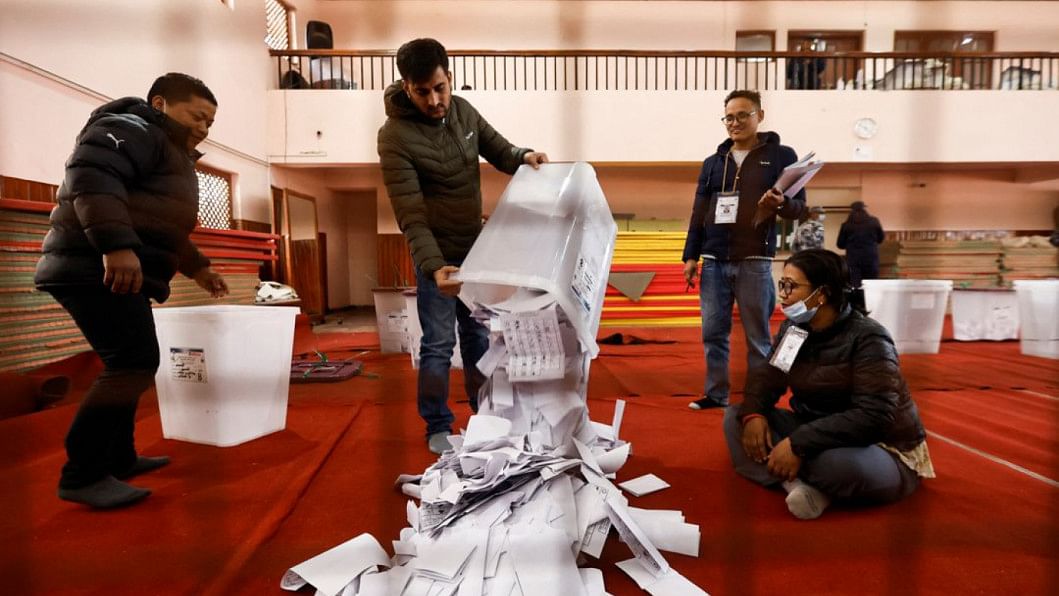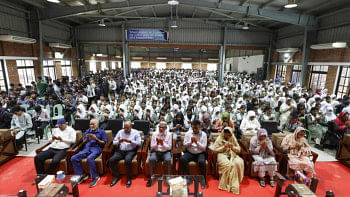Nepal elections: Political stability may elude the nation again

Nepal held its elections for the parliament as well as for its provinces on November 20. This is the second election after the Republican constitution was promulgated in 2015 and has brought about the 11th government since 2008.
Nepal has a mixed system of election for the lower house of the Parliament, known as House of Representative. While 60 percent of the seats have to be directly elected, 40 percent are allocated on the basis of proportional votes polled during the election. According to this arrangement, for 165 of the seats the candidates are elected on the basis of the first-past-the-post system (FPTP), and 110 seats are distributed on the basis of proportional representation (PR). Though the election results have not been formally declared, certain trends are very much clear.
This election has resulted in several surprises in the context of party politics. As expected, the Nepali Congress (NC)-led five party alliance, which includes Communist Party of Nepal (Maoist centre), Communist Party of Nepal (Unified Socialist), Loktantrik Samajwadi Party and Rastriya Janamorcha, is leading even though they may not get a majority.
Together, the five party coalition has won 86 seats. There are 110 seats that are to be distributed on the basis of votes polled by political parties. The CPN-UML has got the largest number of proportional votes at 27.30 percent, followed by NC at 25.88 percent, and the Maoist Centre at 11.5 percent. After the determination of PR seats the UML would be only ten seats behind the Nepali Congress led coalition. Forming a formidable coalition would be a challenge to UML. Yet, the UML, headed by former prime minister KP Sharma Oli has not given up the hope of forming government at the centre and a phone call from Oli to Prachanda (with whom he had bitterly parted ways), after the election results came out, created political flutter among the aspirant prime ministerial candidates.
The challenge for NC would be to sustain the pre-election coalition and form a stable government that has always eluded Nepal. According to some estimates, Nepal has seen 32 governments since the introduction of multiparty democracy in 1990. Though the NC led coalition parties have not agreed on a Prime Ministerial candidate, it is expected that Sher Bahadur Deuba may become the next Prime Minister even though there are others within his party who have expressed their desire to contest for Parliamentary party leadership. Role of Maoist would be crucial for the formation of government and already the UML is trying to wean the Maoist away. It needs to be mentioned that the UML and the Maoist were in coalition in 2017 election, but their partnership did not sustain due to the unravelling of a pre-poll understanding that Oli and Prachanda will be Prime Minister for equal period of time. Both the parties who had merged their parties to form Nepal Communist Party. The Supreme Court had annulled the formation of Nepal Communist Party because a party with the same name was already in existence.
It could also happen that, to prevent the NC-led coalition from forming a government (under which Deuba could become PM), the UML may offer premiership to Prachanda for the first half of the new government's term. In Nepal's coalition politics, neither ideology nor alliance matters, as party leaders are motivated by self-aggrandisement. This is evident from both the NC- and UML-led coalitions which are mixtures of left of centre, right of centre and pro Monarchist party, ethnic parties coming together. The rivalry between them have affected political stability.
This could be one of the reasons why some smaller parties have become rising star in terms of their performance. For example, a new party Rashtriya Samajtantra Party (RSP) formed six months before the election by Ravi Lamichhane, a TV personality has taken everyone by surprise. His party has won seven seats and in terms of PR votes they are the fourth largest polling around 10.9 percent of the votes. Another interesting entry to the political scene in the Janamat Party headed by US-educated Dr CK Raut who till recently was arguing for secession of Terai. After the 11-point agreement with former Prime Minister KP Sharma Oli, he decided to join electoral politics. His appeal can be gauged from the fact that he won by large margin in Saptari defeating the leader of Janata Samajbadi Party, Upendra Yadav whose party otherwise has won seven seats. While the Terai based ethnic parties did not perform well in the election, the Loktantrik Samajwadi Party led by Mahanta Thakur and the victory of Dr C.K.Rout demonstrates that ethno-national politics is still relevant. Another party Nagril Unmukti Party has won three seats in Tharuhat region. While the Unified Socialist party led by Madhav Kumar Nepal won ten seats, it has polled less than three percent vote which would mean his party will not get the national party stature as per Nepal constitution, and the Janamat Party even with its one seat and 3.9 percent votes will be designated as a national party.
The role of the President, Bidya Devi Bhandari, in such a political scenario would be important. In the last five years, her role has been controversial and partisan. She has not hesitated to demonstrate her ideological affinity with UML – her parent party. In spite of the constitution mandating five-year term for the Parliament, she ordered dissolution of Parliament on PM Oli's advice even though he had lost his majority in the Parliament. This led to the intervention of Supreme Court which restored the Parliament and allowed the NC to stake a claim to form government. She refused to give assent to Citizenship Bill even though it was presented to her twice after passed by the Parliament even though according to Article 113 (4) she is mandated to give her assent. It is possible that she may invite UML, if the party can cobble up a majority coalition.
Political stability has eluded Nepal since the dawn of democracy. Personal ambition and differences among the coalition partners would not help the cause of democracy as the attention of the government is diverted away from governance issues to the day-to-day survivability of the government. Coalitions that are fragile will be subjected to severe pull and push. Nepal may brace for another round of political instability in the next five years.
Smruti S Pattanaik is research fellow at Manohar Parrikar Institute for Defence Studies and Analyses (MP-IDSA).

 For all latest news, follow The Daily Star's Google News channel.
For all latest news, follow The Daily Star's Google News channel. 



Comments